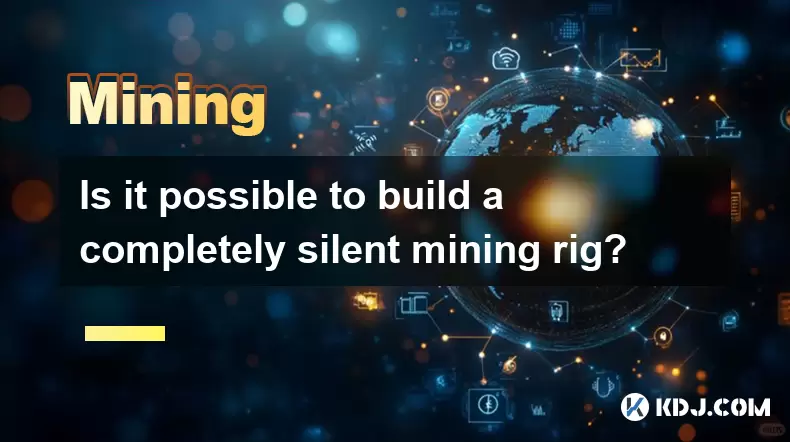-
 Bitcoin
Bitcoin $119,161.9671
1.52% -
 Ethereum
Ethereum $2,995.0722
2.34% -
 XRP
XRP $2.8555
5.32% -
 Tether USDt
Tether USDt $1.0002
0.00% -
 BNB
BNB $692.9308
1.48% -
 Solana
Solana $162.9611
1.87% -
 USDC
USDC $0.9999
0.00% -
 Dogecoin
Dogecoin $0.2014
2.84% -
 TRON
TRON $0.3032
0.90% -
 Cardano
Cardano $0.7464
6.51% -
 Hyperliquid
Hyperliquid $49.1533
5.71% -
 Stellar
Stellar $0.4773
24.77% -
 Sui
Sui $3.4979
3.93% -
 Chainlink
Chainlink $15.8552
6.01% -
 Hedera
Hedera $0.2401
23.85% -
 Bitcoin Cash
Bitcoin Cash $510.0474
0.97% -
 Avalanche
Avalanche $21.5550
4.82% -
 UNUS SED LEO
UNUS SED LEO $9.0389
-0.47% -
 Shiba Inu
Shiba Inu $0.0...01340
2.27% -
 Toncoin
Toncoin $2.9910
0.62% -
 Litecoin
Litecoin $96.4406
4.34% -
 Polkadot
Polkadot $4.0359
4.59% -
 Monero
Monero $338.4759
2.80% -
 Uniswap
Uniswap $8.6460
4.01% -
 Dai
Dai $0.9999
0.00% -
 Ethena USDe
Ethena USDe $1.0007
0.03% -
 Pepe
Pepe $0.0...01254
3.26% -
 Bitget Token
Bitget Token $4.3969
0.79% -
 Aave
Aave $312.2641
3.98% -
 Bittensor
Bittensor $397.0731
4.17%
Is it possible to build a completely silent mining rig?
A silent mining rig uses passive or liquid cooling to eliminate fan noise, enabling quiet operation ideal for home environments.
Jul 12, 2025 at 06:28 am

Understanding the Concept of a Silent Mining Rig
When discussing silent mining rigs, it's essential to define what "silent" truly means in this context. A completely silent rig implies that it produces no audible noise during operation, which is challenging due to the nature of mining hardware. Mining involves high computational loads, leading to heat generation, which typically requires fans or other cooling systems. However, complete silence can be achieved through alternative cooling methods such as passive cooling or liquid cooling systems.
Passive cooling relies on heatsinks and airflow without mechanical components like fans. Liquid cooling, while more complex, uses closed-loop systems to dissipate heat silently. Both approaches eliminate the primary source of noise in mining rigs — spinning fans.
Hardware Selection for Silent Mining
To build a silent mining rig, choosing the right hardware is crucial. Not all GPUs are suitable for fanless designs, but some manufacturers produce specialized models designed for passive cooling.
- Selecting Fanless GPUs: Look for graphics cards with large heatsinks and passive cooling capabilities. Some NVIDIA Tesla models and certain AMD Radeon Instinct variants are designed for data center use and operate without active cooling.
- Motherboard Considerations: Choose motherboards with robust VRM cooling and PCIe riser support. Ensure the BIOS allows for disabling onboard fans if any are present.
- Power Supply Units (PSUs): Opt for fully modular PSUs with fanless or semi-passive modes. These units remain silent under low to medium load conditions.
Avoid standard consumer-grade GPUs that rely heavily on noisy axial or blower-style fans for thermal management.
Cooling System Design for Silence
A well-designed cooling system is vital for maintaining both silence and performance. Traditional air-cooled setups often require multiple fans, which contribute significantly to noise levels.
- Passive Cooling Setup: Install large aluminum or copper heatsinks over critical components. Ensure there’s adequate spacing between components to allow natural convection airflow.
- Liquid Cooling Implementation: Use an all-in-one (AIO) liquid cooler or custom loop for the CPU and GPU. Ensure tubing is insulated and mounted securely to prevent vibration noise.
- Case Ventilation: Utilize open-air mining frames or cases with passive ventilation channels. Avoid enclosed cases unless they have optimized airflow paths.
Careful attention must be paid to ambient temperature and room ventilation, as silent cooling systems may struggle in hot environments.
BIOS and Software Optimization
Even with the right hardware, achieving silence requires tuning the software and firmware settings to minimize thermal output and fan usage.
- Fan Curve Customization: If using a hybrid setup, configure fan curves so that fans only spin under heavy load. Tools like MSI Afterburner or EVGA Precision X1 allow granular control.
- Undervolting and Underclocking: Reducing voltage and clock speeds lowers power consumption and heat output. This extends the feasibility of passive cooling methods.
- BIOS Settings: Disable onboard hardware monitoring fans if possible. Check for options like “Silent Mode” or “Fan Off at Idle” in motherboard BIOS settings.
These adjustments help maintain stable temperatures while minimizing acoustic output.
Practical Challenges and Trade-offs
Building a silent mining rig isn't without its challenges. The most significant trade-off is performance versus noise reduction.
- Thermal Limitations: Passive cooling systems may not sustain peak performance indefinitely. Overheating risks increase in poorly ventilated spaces.
- Component Longevity: Running hardware near thermal limits without active cooling can reduce lifespan and increase failure rates.
- Space Requirements: Efficient passive cooling demands larger heatsinks and more open space, making compact builds impractical.
It’s also important to note that true silence often comes at a higher cost, especially when opting for specialized hardware like fanless GPUs or custom liquid cooling loops.
Frequently Asked Questions
Can I convert my existing mining rig into a silent one?
Yes, but it requires replacing noisy components with fanless alternatives. You’ll need to swap out GPUs for passive-cooled models, install a fanless PSU, and possibly modify the case for better airflow.
Are silent mining rigs more expensive?
Generally, yes. Fanless GPUs and liquid cooling solutions tend to be more costly than their traditional counterparts. Additionally, passive cooling may necessitate larger, more expensive heatsinks and enclosures.
Do silent mining rigs perform as well as regular ones?
Performance depends on thermal management. While you can achieve similar hashrates, maintaining them continuously may be difficult without active cooling. Undervolting and underclocking are often necessary to stay within safe thermal thresholds.
Is a silent mining rig suitable for home use?
Absolutely, especially if placed in a well-ventilated area. Silent rigs are ideal for residential environments where noise pollution is a concern, such as apartments or shared living spaces.
Disclaimer:info@kdj.com
The information provided is not trading advice. kdj.com does not assume any responsibility for any investments made based on the information provided in this article. Cryptocurrencies are highly volatile and it is highly recommended that you invest with caution after thorough research!
If you believe that the content used on this website infringes your copyright, please contact us immediately (info@kdj.com) and we will delete it promptly.
- Bitcoin: Buy the Dip Before the March 2028 Halving?
- 2025-07-14 12:30:11
- Seattle Sports, BlockDAG, and Price Rise: What's the Buzz?
- 2025-07-14 12:50:12
- Bitcoin Price Rockets: New ATHs and What's Next?
- 2025-07-14 13:10:15
- Metaplanet's Bold Bitcoin Bet: A New Corporate Strategy?
- 2025-07-14 13:10:15
- Bitcoin Blasts Past $120,000: How Institutional Investors Are Fueling the Price High
- 2025-07-14 12:30:11
- Skale Network (SKL): Decoding the Buzz Around This Crypto Game-Changer
- 2025-07-14 12:55:12
Related knowledge

How are crypto mining profits taxed?
Jul 14,2025 at 12:28am
Understanding Cryptocurrency Mining and TaxationCryptocurrency mining involves validating transactions on a blockchain network and earning rewards in ...

How to keep a mining rig cool
Jul 12,2025 at 01:42pm
Understanding the Importance of Cooling in Mining RigsCryptocurrency mining is an intensive process that places heavy demand on hardware components, p...

How much does it cost to start crypto mining?
Jul 13,2025 at 12:22am
Understanding the Basic Costs of Crypto MiningStarting crypto mining involves several upfront and ongoing expenses. The primary costs include hardware...

What is the most profitable crypto to mine?
Jul 13,2025 at 07:00am
Understanding Mining Profitability in CryptocurrencyWhen evaluating the most profitable crypto to mine, it's essential to consider several factors tha...

What do I need to start mining crypto?
Jul 13,2025 at 12:28am
Understanding the Basics of Crypto MiningCrypto mining is the process by which transactions are verified and added to a blockchain, and new coins are ...

How does crypto mining work?
Jul 13,2025 at 11:01am
Understanding the Basics of Crypto MiningCrypto mining is the process through which new cryptocurrency coins are introduced into circulation and trans...

How are crypto mining profits taxed?
Jul 14,2025 at 12:28am
Understanding Cryptocurrency Mining and TaxationCryptocurrency mining involves validating transactions on a blockchain network and earning rewards in ...

How to keep a mining rig cool
Jul 12,2025 at 01:42pm
Understanding the Importance of Cooling in Mining RigsCryptocurrency mining is an intensive process that places heavy demand on hardware components, p...

How much does it cost to start crypto mining?
Jul 13,2025 at 12:22am
Understanding the Basic Costs of Crypto MiningStarting crypto mining involves several upfront and ongoing expenses. The primary costs include hardware...

What is the most profitable crypto to mine?
Jul 13,2025 at 07:00am
Understanding Mining Profitability in CryptocurrencyWhen evaluating the most profitable crypto to mine, it's essential to consider several factors tha...

What do I need to start mining crypto?
Jul 13,2025 at 12:28am
Understanding the Basics of Crypto MiningCrypto mining is the process by which transactions are verified and added to a blockchain, and new coins are ...

How does crypto mining work?
Jul 13,2025 at 11:01am
Understanding the Basics of Crypto MiningCrypto mining is the process through which new cryptocurrency coins are introduced into circulation and trans...
See all articles

























































































